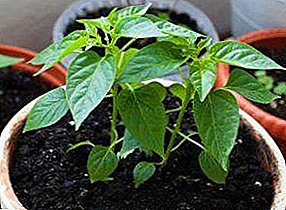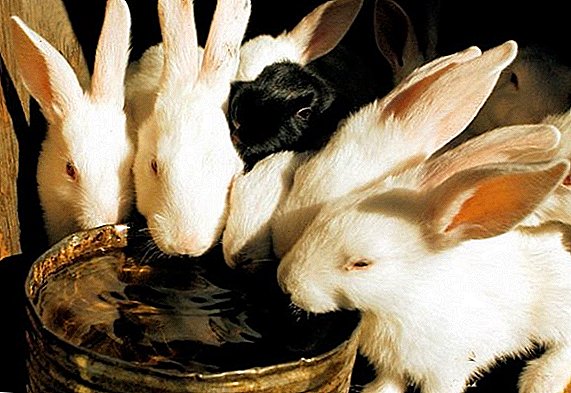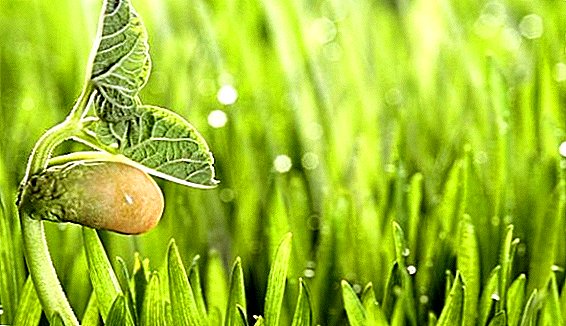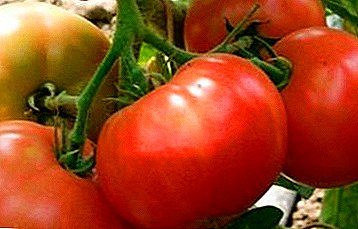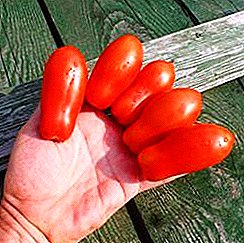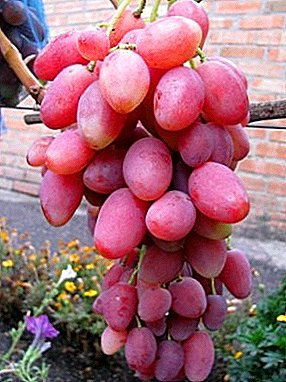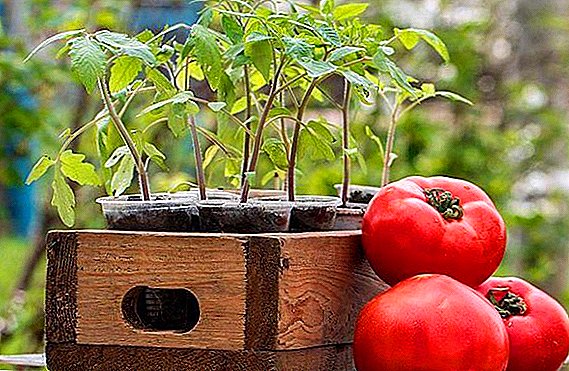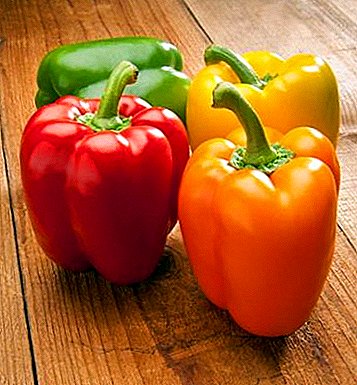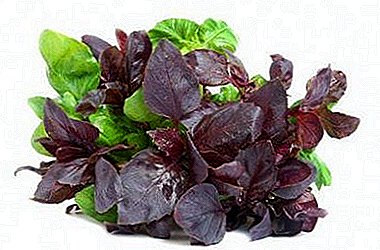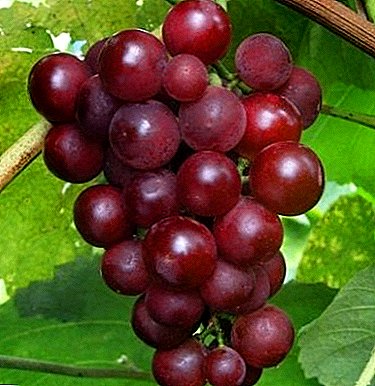
With the advent of new high-yielding varieties resistant to negative temperatures and diseases, the cultivation of grapes has ceased to be an "exotic" hobby, which only the chosen ones enjoyed.
Today, if you have the desire and little experience, any gardener living in a temperate zone can grow this wonderful plant in his household plots.
The main criterion of success in this case is the correct choice of a variety suitable for cultivation in specifically taken conditions. In particular, the grapes of the domestic selection "Alexander", bred in the Bashkir Research Institute of Agriculture, deserved quite good reviews.
What kind is it?
"Alexander" refers to the group of pink table varieties of universal purpose, intended for use in fresh and processed form. Characteristic - an attractive appearance and a pleasant fruity taste, with delicate "isabelny" notes. To this type are varieties Ruta, Delight and Laura.
Tastes are good. Tasting score - 8.5 points on a ten-point scale. Sugariness of this variety is not very high - about 15%, that is, they can hardly be called sweet because of the presence of pronounced acidity (the acidity index of Alexander is 1.2 g / l). But it is also impossible to call him sour. Rather, its taste can be described as delicate and slightly tart.
It is an early variety, with a high resistance to various diseases and pests, including wasps. The vegetation period of the plant ranges from 128 to 164 days. Muscat Bely, Kishmish 342 and Julian also differ in early maturity.
Description grape varieties Alexander
The clusters of this variety are small, in the shape of a cylinder, with a small branching. The average weight is about 135 g. Under the condition of abundant watering and favorable climatic conditions, their weight can reach 150-200 g.
The berries are rounded, medium-sized, arranged very tightly in the brush, therefore, when collecting them, it is necessary to handle them with extreme care so as not to damage.
The height of the bush - the average. The leaves are large, solid, with an asymmetrical structure and weak spider pubescence on the underside. The color of the foliage is closer to the light green. The number of clusters on a bush is large, because of this, the plant requires preventive pruning to ensure an adequate level of illumination and to obtain a higher quality crop. Vine - dense, fleshy. Shoots grow well from old wood.
A photo
For more information about the appearance of the grapes "Alexander" in the photo below:





Origin and History of Inference
The appearance of the grapes "Alexander" is obliged to the Research Institute of Agriculture of Bashkiria in the face of its employees: Abdeeva MG, Maistrenko N.V. and Strelaevoj L.N.
According to some sources, it got its name in honor of the last son who died in the war.
The planting of the first hybrid seedlings in the ground took place in 1989. And in 1999 this variety was included in the State Register of Breeding Achievements of Russia and recommended for cultivation in all climatic zones of the country.
Characteristics and individual qualities
 A distinctive feature of the variety "Alexander" is its high resistance to freezing. Because of this, he, as well as the Beauty of the North and Super Extra, can be cultivated in the northern regions, in which the air temperature in winter reaches -25 degrees.
A distinctive feature of the variety "Alexander" is its high resistance to freezing. Because of this, he, as well as the Beauty of the North and Super Extra, can be cultivated in the northern regions, in which the air temperature in winter reaches -25 degrees.
It is resistant to mildew and oidium, but when heavily thickened planting can hurt. In the process of growth produces a large number of stepsons.
Yield is enough high. On average, when growing on an industrial scale, it is about 124 centners per hectare (under favorable climatic conditions and appropriate care, this figure can reach 163 centners per hectare). Harvest from the bush - about 7-8 kg. Victoria and Anyuta can also boast high yields.
Full ripening of berries in the middle lane occurs around the 10th of September. By this time, the grapes are poured with juice, and its seeds acquire a characteristic brown color.
Disease and pest control
 "Alexander" refers to the group of medium-resistant varieties, well opposed to various pests and diseases.
"Alexander" refers to the group of medium-resistant varieties, well opposed to various pests and diseases.
Practically not affected by mildew and oidium. At the same time, it is subject to the development of gray mold. The cause of the disease is the reproduction of microscopic organisms of the fungal group Botrytis cinerea, parasitic on plants and leading to their death.
Appears in conditions of high humidity on young shoots and ripening berries, which, with the defeat of gray rot turn brown, become shriveled and covered with a thick bloom of gray tint. Gradually, infection is transmitted to the entire bunch and inflorescences of grapes, leading to their drying.
How to fight:
- Having found the signs of disease on the bush, the affected clusters and shoots must be carefully cut and burned, and then spray the plant with a solution of baking soda or 1% of green soap. If the disease is affected, only a small part of the plant is enough to spray it with a soda solution at a concentration of 70 g soda per 10 liters of water.
- Prevent high density grape planting and produce timely trimming and molding.
- In severe forms of the disease, you can use the drug. Antracol.
Useful information: To prevent the appearance of fungal infections in the fall, plants can be treated with the drug DNOC, which is a fungicide, herbicide and intoxicant "in one bottle".
findings
 In general, "Alexander" is not capricious in the care and does not require the use of special techniques of agricultural engineering.
In general, "Alexander" is not capricious in the care and does not require the use of special techniques of agricultural engineering.
To protect it from all sorts of negative factors, including all types of bacterial and fungal lesions, sufficiently timely pruning and processing of complex drugs. To fully own information about diseases such as anthracnose, bacterial cancer and chlorosis, read the articles in the large section on diseases of grapes.
Thus, we can conclude that this variety, thanks to its "stress tolerance", frost resistance and unpretentiousness, combined with good taste and high yield, is well suited for cultivation in various regions, including areas with low average annual temperatures.
Its only drawback is the tendency to thickening and the small size of the clusters. However, it is fully compensated by the versatility and practicality of the "Alexander", making it convenient for growing gardeners with minimal experience.


